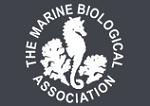APHOTOMARINE
An educational resource dedicated mainly to the photography
and diversity of marine life that can be found in coastal waters
and intertidal areas of Great Britain and Ireland by David Fenwick.

Argonemertes sp. (c.f. A. australiensis)
- worms dorsal view 1
Smiling / Nemertine worm
Argonemertes sp. (c.f. A. australiensis)
- worm dorsal view 1
Smiling / Nemertine worm
Argonemertes sp. (c.f. A. australiensis)
- worm dorsal view 2
Smiling / Nemertine worm
Argonemertes sp. (c.f. A. australiensis)
- with 1.0mm division rule 1
Smiling / Nemertine worm
Argonemertes sp. (c.f. A. australiensis)
- worm anterior 1
Smiling / Nemertine worm
Argonemertes sp. (c.f. A. australiensis)
- worm anterior 2
Smiling / Nemertine worm
Argonemertes sp. (c.f. A. australiensis)
- proboscis 1
Smiling / Nemertine worm
Argonemertes sp. (c.f. A. australiensis)
- proboscis 2
Specimens found among rotting timber and under stones in the Penzance area of West Cornwall. Species first found in the authors garden in Heamoor, Penzance, Cornwall, in May 2013.
This species has been DNA sequenced at the Natural History Museum in London, the sequence does not represent any described species. Although thought to be very similar this species is not Argonemertes australiensis, which has a different barcode. The species is waiting to be described.
It is thought the species might have been introduced by Treseders Nursery from Australia on the trunks of tree ferns at the begining of the 20th century. The authors garden is just a couple of miles from Trewidden Gardens where Dicksonia antarctica was first grown outdoors in the UK. Dicksonia is grown even closer to the author at Morrab Gardens, Penzance and at Trengwainton Garden and has even naturalized in woods near Skimmel Bridge. This nemertean species has also been found in Morrab Gardens and in Penzance Cemetery.
An expert in Australia believes it is unlikely the species survives in the wild in Australia due to environmental change due to climate change, deforestation and development. Cornwall now appears to be its adopted home.
Tags: Argonemertes new UK species terrestrial nemertean ribbon smiling worm nemertine NNS non-native alien Australian APHOTOMARINE May 2013
APHOTOMARINE supports open source data recording and sharing for the benefit of wildlife, recorders, research, science and education. The project recommends the following websites and works with the following bodies and organisations.
The Marine Biological Association or MBA, based in Plymouth, is one of the world’s longest-running societies dedicated to promoting research into our oceans and the life they support. Since 1884 the MBA has been providing a unified, clear, independent voice on behalf of the marine biological community.It has a growing membership in over 40 countries.
The National Biodiversity Network or NBN is a charity that supports open source data sharing and recording supporting conservation, science and education. "Why do recorders need open source?". Simply because it supports the core values of wildlife recording and the free use of records and data over a very wide network that includes partners like the Natural History Museum.
The taxonomy used here is based on that of the following database, which is also used by the MBA, NHM and the NBN.
The World Register of Marine Species or WoRMS.

